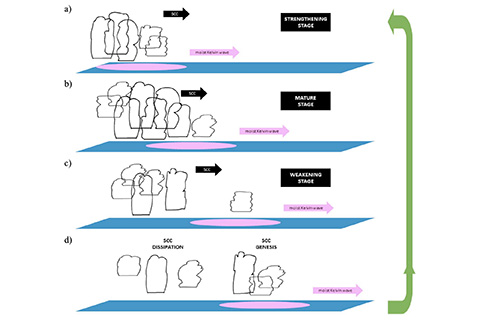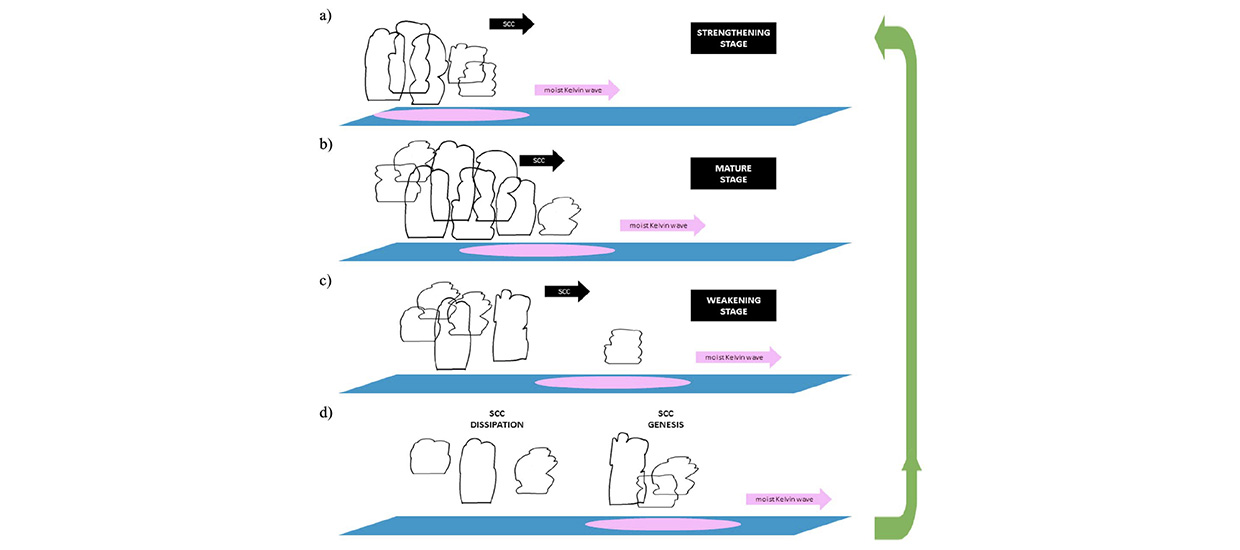Over the course of several projects we explored the dynamics of tropical convection in various environments such as radiative-convective equilibrium, in the intertropical convergence zone, and in convectively-coupled tropical waves.
Some recent papers:
Blanco. J. E., D. S. Nolan, and B. E. Mapes, 2019: Nonlinear zonal propagation of organized convection in the tropics. J. Atmos. Sci., 76, 2837-2867.
Blanco, J. E., D. S. Nolan, and B. E. Mapes, 2016b: Convectively coupled Kelvin waves in aquachannel simulations: 2. Life cycle and dynamical-convective coupling, J. Geophys. Res. Atmos., 121, 11,319–11,347.
Blanco, J. E., D. S. Nolan, and S. N. Tulich, 2016a: Convectively coupled Kelvin waves in aquachannel simulations: 1. Propagation speeds, composite structures, and comparison with aquaplanets, J. Geophys. Res. Atmos., 121, 11,287–11,318.
Nolan, David S., Stefan N. Tulich, and Joaquin E. Blanco, 2016: ITCZ structure as determined by parameterized versus explicit convection in aquachannel and aquapatch simulations. J. Adv. Model. Earth. Syst., 8, doi: 10.1002/2015MS000560.





